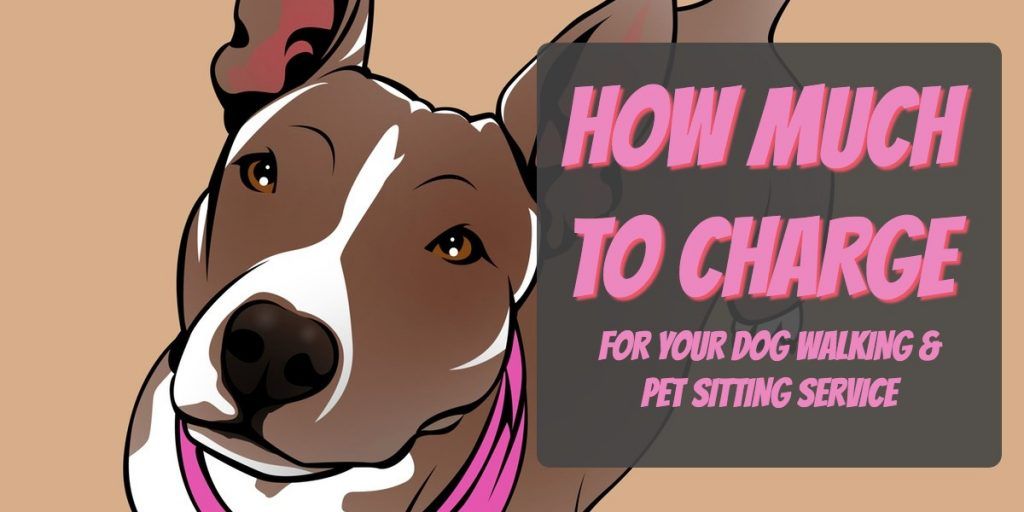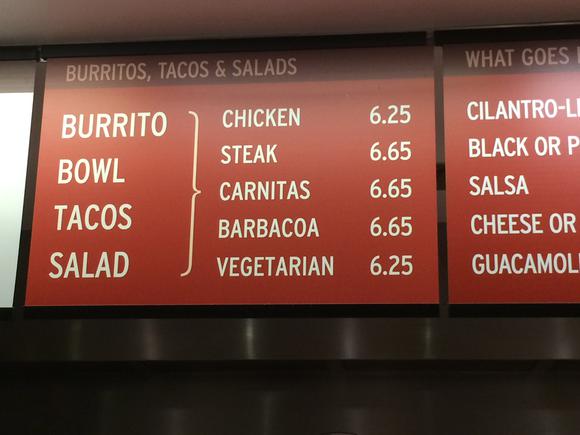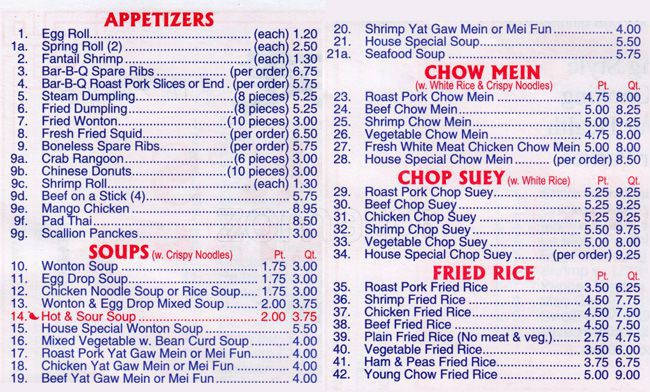- What's your pricing strategy?
- What's your revenue goal?
- What are your expenses?
- Will you charge by time or service?
- What are your competitors charging?
Pricing Strategy
What you charge should have a specific rhyme and reason behind it. Customers will be comparing your prices with the competition, so you want to make it obvious in how your prices fit within the market
We’d suggest that you should be striving for 3 things in figuring out how much to charge:
- Make your pricing easy to understand
- Make your pricing easy to remember
- Make your pricing affordable for your market, but higher than average
Make Your Pricing Easy To Understand
The bottom line is that, if a potential customer can’t figure out how much you're charging and how much it’s going to cost them, they’ll move on to the next company they find.
Take a look at your competition’s pricing page on their website. Did you notice that they are probably charging different rates for different services, different times of day, different days of the week, giving medication, extra dogs, and other things?
In my opinion, all these numbers confuse people. That’s why we’d suggest having a “one price all the time” pricing structure.
As an example of this, have you ever been to a Chipotle restaurant before? If so, then you've seen a very simple, yet effective, "one price" strategy at work. Their entire menu is made up of basically 6 different dishes at one price. It's super easy to understand.
Now compare the menu above to a typical menu you find at a Chinese restaurant:
The Chinese restaurant menu is much harder to understand as compared to the Chipotle menu, isn't it? That's why you want to charge in a way that is easy to understand.
For this “one price all the time” structure, we’d suggest charging simply by the time that you’re with a client’s pet. For example, we’d suggest having your services last either 15, 30, 45, or 60 minutes. Whatever the client wants you to do in that time is covered.
In other words, your price is generally “all-inclusive”, so if a client wants you to give food, water, medication or bring in the mail in addition to walking a dog, you would do all that for just one price. Whatever you can fit in the duration of the visit is done for that one price
The main exceptions would be for major holidays where you can charge an extra fee for every visit on that particular day.
You could also charge more for multiple pets.
You could possibly charge more for different parts of the day, but I don't like charging more for weekend and night visits.
Make Your Pricing Easy To Remember
Another reason to have one price all the time is because people will get frustrated by not being able to remember all the small little up-charges for things like giving medications, bringing in mail, etc.
When a great dog walking client of yours has a sudden need for pet sitting this weekend and her dog needs medication, a visit at 8pm, and the mail brought in, the last thing she wants to try to remember is if you charge $2 or $3 for the medication, and how much extra it is to come on a weekend night, and if you'll bring in the mail or not.
All your client wants to know is that you'll do the job.
Charging $1 or $2 or $3 extra for these things will do very little for your revenue but will almost surely confuse and possibly even frustrate your very loyal customer.
Why insert the chance for a bad customer experience when all you're gaining is a meager couple bucks?
Make Your Pricing Affordable, But Higher Than The Average
You don’t want customers who are looking for the lowest possible price. You want people who will pay a fair price for an excellent service.
Those are the people who will stick with you and happily pay just a bit more than the average.
If you offer 15-minute increments of time, most of your clients will pick a 30-minute duration for dog exercise or sitting visits. The average cost of this type of service from your competitors is probably somewhere in the $15 to $20 range (this may be higher or lower depending on your market). Your price should be at the top of that range because you’re still within the “affordable” window but yet you’re giving an indication that you have higher quality with a higher price.
Keep in mind that the difference between what you’ll be charging and what others charge is probably only a dollar or two or three. If, after you describe your service, someone doesn’t choose you because you cost $1 more, you don’t want that client anyway.
Time Or Service?
Should you charge by the time it takes you to complete a service or should you charge based on the type of service you’re providing?
Charging By Time
By charging by “time”, what I mean is that you offer people a price based on how long you’re with their pet. So, no matter what the service is, 15 minutes of time may cost $15 while 30 minutes of time may cost $20.
For example, let's say your client wants you to spend 30 minutes with her dog, Spot, today and to spend that time on a walk. But, tomorrow, she also wants you to give Spot a pill, bring in the mail, and throw the ball to him, all within a 30-minute time window.
In charging by time, both days' activities will cost the same thing because you specifically stayed for 30 minutes, despite the difference in what you actually did with Spot.
Charging By Service
On the other hand, you could charge by the “service”, meaning that you're charging for each activity you perform.
For example, dog walking is $15 (not dependent on time) so then the client asks you how long you'll be out and you say "as long as we like" or something like that. And although dog walking is $15, pet sitting is $18 and weekend pet sitting is $20 and dog running is $22 and giving a pill is an extra $2 and bringing in the mail is another $1. You're doing all these things regardless of how long it may take you.
Why We Like The Time Model
We know of successful people that do it both ways. Here’s our take on why I like charging by time, not service.
First, charging by “service” tends to confuse customers because you’ll have all different types of services with all different rates. We’ve found that people can understand a pricing structure much easier when it’s based on time.
Second, paying for “service” is a very intangible thing. For example, if you charge $15 for “dog walking”, what exactly does that mean? Customers will have questions about how long you’ll be with the pet and if that amount of time will be consistent for each visit. If you charge by “time”, this is much more concrete for your customer. They understand that they’re paying for “dog walking” and, more specifically, they’re paying for 15 minutes of it. If you stayed 20 minutes even though your visit was supposed to be just 15 minutes, then they feel that they just got an extra 5 minutes “for free.”
Overall, we’ve found that charging by time makes it easier for the customer to understand what they’re getting and it gives you an opportunity to give them something “for free” if you end up staying a little longer than what they paid for.
What's Your Revenue Goal?
Revenue - Expenses = Profit
The above equation states that what you make (your profit) is what’s left after you pay expenses from the revenue that comes into your company.
Luckily for you, you have a say in how much you make. A lot of this is controlled by the prices you charge for your business. Let’s see how your pricing affects how long it takes you to earn $50,000 in revenue.
- If you charge $20 per visit, that's 2,500 visits to earn $50,000
- If you charge $18 per visit, that's 2,778 visits to earn $50,000
- If you charge $15 per visit, that's 3,334 visits to earn $50,000
If each visit is 30 minutes, then it takes an extra 417 hours to reach $50,000 in revenue if you charge $15 instead of $20. That’s more than 2.5 extra months of work for the same money!
If you charge a lower amount than you should, over time this can add up to enormous amounts of lost time and money. Thus, your profit per hour goes down.
Don't be afraid to charge what you know you're worth. The amount of money you put in your pocket at the end of the day is drastically affected by very small differences in how much you charge.
Account For Your Expenses
To make a profit, obviously your revenue will need to be higher than your expenses.
In a service-based business, your biggest expense is probably going to be your labor. Beyond that, you’ll also have all the other costs associated with running your business, like marketing/advertising and operational expenses.
So, a critical piece of our pricing puzzle is to understand how much your expenses are. It’s generally easy to figure out how much you pay every month in expenses, so we’d recommend you start with a monthly timetable in mind.
Add up all your expenses every month (or what you anticipate those expenses to be if you haven’t started yet). If you’re not sure how much to pay people yet (because, again, labor will be your biggest expense), then just plan on 50% of what you charge your clients going to labor expense.
Once you have that monthly number, now you know how much you need to make just to break even.
With that expense number in mind, then you can calculate how many visits you’d need to make and at what price to make that money back plus a profit.
For example, if your monthly expenses are $500 and you’re going to charge $20 per visit, then you need to make 25 visits to cover your costs. However, if you charge only $15 per visit, now you need to make about 34 visits to cover your costs. That’s an extra 9 visits worth of time to make the same money.
Hopefully you can see that a $5 change in a lower price has cost you hours and hours of extra work to cover your expenses. This is why it’s important to determine a price that is going to cover your costs as efficiently as possible.
Research What Your Competitors Are Charging
No matter what local market you're in, you'll want to do competitive research to see what other businesses are charging. Here are the three main things you want to find out:
- Who is your competition? In particular, what are their business names, who are the owners, what services do they offer, and what areas do they service?
- Write down what they're charging for any services that are similar to the services you also offer
- Write down their highest and lowest prices for any services you also offer and take note of who those companies are
What you want to do is understand the market from a client’s perspective. If they’re comparing you to other companies (which they probably are), you want to know how you fit.
For example, are there any other businesses that provide similar services to what you’re offering? If so, are they near to you and could they also service your local area? Are their prices high or low? What other amenities do they provide, such as credit card billing, visit report cards, and any other items that would appeal to a client?
Doing all this gives you a sense of how truly competitive another business may be to you.
For example, if there’s another dog walker but they’re 10 miles away from you, there’s a good chance that they won’t service the exact local market you’re in. This is good to know because if a potential client of yours also calls them, you already know that it’s unlikely that the other company will even be able to help. Thus, your competition is reduced.
Here are some other things to consider when evaluating your competition:
- Seek out any outrageously high or low prices and consider why their prices are out of the normal range. If there is a valid business reason, consider this competitor’s pricing and, if not, disregard them
- Plan to have your pricing at the top of the range of your competitors. It is OK to have your prices be more expensive than your competitors (in fact, they probably will be). The customers you are looking for will pay more for a better product/service
- For 15, 30, 45, and 60-minute visits, $5 variance between each 15-minute increment is a good spread. For example, if your 15-minute visit is $15.00, then your 30-minute visit can be $20.00
After you’ve done all the above competitive research, you should have a good idea of what your competition looks like and what they’re charging. You should primarily base your pricing decisions on this data.
In many markets we’ve seen, the prices below are often a good baseline to start with. If you’re in a major downtown area (like New York), you’ll likely be charging more than what’s below. If you’re in a lower income area or more farm/rural, then perhaps your pricing will be a bit less.
Again, only use this as a baseline and it’s perfectly normal to increase or decrease your prices based on what’s actually happening in your local area.
- 15 minutes = $15
- 30 minutes = $20
- 45 minutes = $25
- 60 minutes = $30
- "Pet Sitting Package" of three 30-minute visits = $60
- Daily private in-home boarding = $65 with a 24-hour minimum. Hourly prorated charges for more than a full day but less than another full day are calculated at approximately $2.70 per hour
- Sleep-overs at the client’s home = $100 per a roughly 11-hour stay from 8pm to 7am
Your Turn
So, how will you charge for your dog walking and pet sitting services? Leave us a comment below and let us know what you need help with and/or how you currently price your services.




